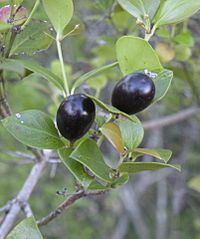Josepha Petrick Kemarre facts for kids
Quick facts for kids
Josepha Petrick Kemarre
|
|
|---|---|
| Born | circa 1945 or 1953 Santa Teresa Mission, Northern Territory, Australia
|
| Nationality | Australian |
| Known for | Painting |
| Movement | Contemporary Indigenous Australian art |
Josepha Petrick Kemarre is an Anmatyerre-speaking Indigenous Australian artist from Central Australia. She was born around 1945 or 1953. Since she started painting in the early 1990s, her artworks have been bought by important collections like Artbank and the National Gallery of Victoria.
Her paintings often show "dreaming" stories about the bush plum plant and women’s ceremonies, called Awelye. Her art uses strong colors and clear designs. One of her paintings sold for A$22,800 at a charity auction. Josepha Petrick's works are still popular in art sales today.
Contents
About Josepha Petrick Kemarre
Josepha Petrick Kemarre is an Anmatyerre-speaking Indigenous Australian. She was born near Alice Springs in Australia's Northern Territory. This was at the Santa Teresa Mission, around 1945 or 1953.
When Josepha Petrick started painting for Mbantua Gallery, she preferred to be called Josepha. She had previously been known as Josie.
She married Robin Petyarre, who was the brother of another artist, Gloria Petyarre. Josepha then moved to Utopia, an area north-east of Alice Springs. She began painting around 1990 while living there. Josepha and Robin had seven children. One of their children, Damien Petrick, also became an artist. By 2008, Josepha's husband had passed away. She then divided her time between Alice Springs and Harts Range.
Her Art Journey

Modern Indigenous Australian art from the western desert began in 1971. This was when Indigenous men at Papunya started creating art using Western materials. A teacher named Geoffrey Bardon helped them. Their art used acrylic paints to show designs from body painting and ground sculptures. This new art style quickly spread across Indigenous communities in central Australia. A government art program in 1983 helped it grow even more.
By the 1980s and 1990s, this art was shown all over the world. At first, only men were the artists. But many women also wanted to paint. In the 1990s, many Indigenous women began creating art. In communities like Utopia, people started making artworks specifically to show and sell.
Her Career as an Artist
Josepha Petrick began painting around 1990 or 1992. She joined the modern Indigenous art movement that started in the 1970s. By 1998, her art was being bought by private collectors and public places like Charles Sturt University. In 2005, the National Gallery of Victoria bought one of her works.
Her career became more well-known when her painting was part of the National Gallery of Victoria's 2006 Landmarks exhibition. Her painting was even printed in the exhibition's book, next to a work by famous artist Yannima Tommy Watson. Petrick's paintings have been shown in galleries in Melbourne and Hong Kong. They were also displayed at the Australian embassy in Washington in 2001.
In 2006, Josepha Petrick created a special painting for a charity event at the University of New South Wales. It sold for A$22,000. The highest price paid for her work at an auction was A$22,800 in May 2007. An image based on her painting, Bush Berries, is even on the cover of a book about how we see motion.
What Her Paintings Show
Artists from Central Australia often paint specific "dreamings" or stories. These stories are important knowledge passed down through generations. Josepha Petrick paints two main types of dreamings, each with its own style.
One type is the bush plum dreaming. This represents a plant from the central Australian desert. The plant is important for food and spiritual reasons. These paintings use red, blue, and orange dots to show the fruit at different stages.
She also paints women’s ceremonies, called Awelye. These paintings use rows of colored dots and show symbols from women's ceremonies.
Journalist Zelda Cawthorne has called Petrick one of the "finest contemporary Aboriginal artists." Art expert Adrian Newstead says she is among the top 200 Indigenous artists in Australia. He notes that she creates "innovative works" with beautiful patterns of dots. Her style is described as a "modern interpretation of landscape."
Josepha Petrick's art is held in many public and private collections. These include Artbank, the Charles Sturt University Collection, the Holmes a Court Collection, and the National Gallery of Victoria.


